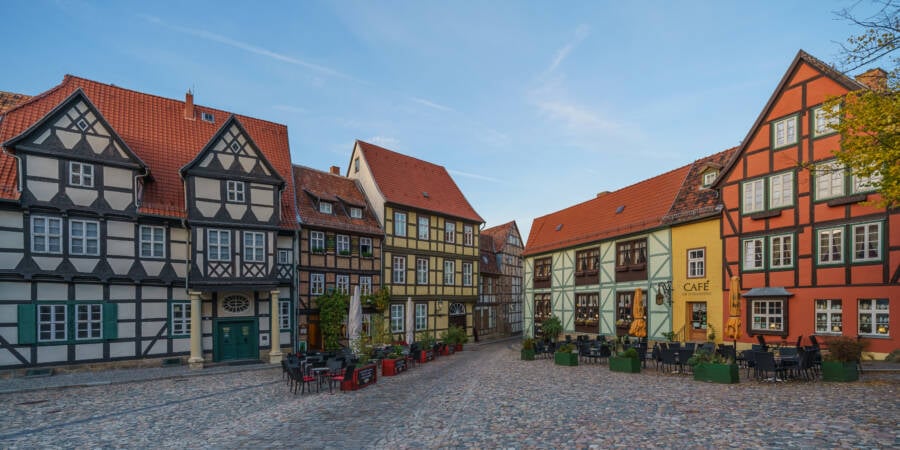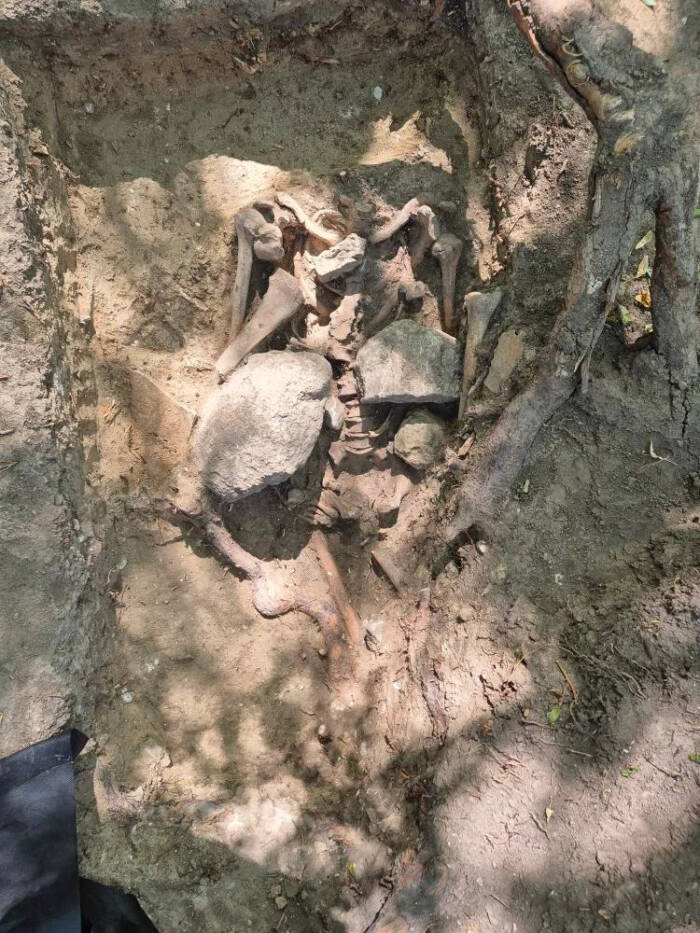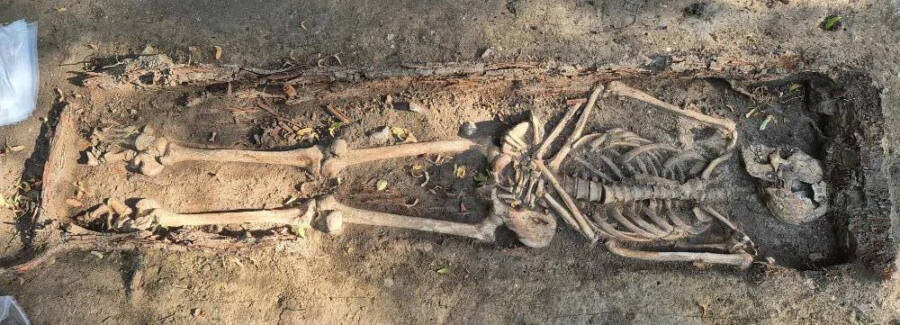Between 1662 and 1809, untold victims were killed at this gallows in Quedlinburg, with some broken on the wheel before being dumped into bone pits and one man buried with anti-zombie countermeasures to stop him from rising up out of the grave.

State Office for Heritage Management and Archaeology Saxony-AnhaltA bone pit containing several sets of human remains at the gallows in Quedlinburg, Germany.
For years, researchers have known about the centuries-old gallows in Quedlinburg, Germany. The city was a prosperous trading center beginning in the Middle Ages, and by the late 17th century, the city’s gallows saw the execution of untold numbers of convicted criminals.
Two years ago, researchers began excavations in the area and unearthed everything from bone pits to individual burials to the personal items of the deceased, all shedding light on the execution process and the fates of those sentenced to death.
Archaeologists Excavate The Gallows Of Quedlinburg

Wikimedia CommonsQuedlinburg was a booming center of commerce during the Middle Ages.
Starting in the medieval period, Quedlinburg, Germany was a thriving commercial hub. Inevitably, the city eventually became home to its fair share of criminals, prompting the creation of a gallows in the 17th century. Between the late 17th century and early 19th century, Quedlinburg’s gallows was used to carry out the capital punishment of countless criminals.
The site likely featured a large wooden structure with an overhead beam from which a noose would hang. Archaeologists initially knew about the gallows in Quedlinburg due to written records showing that the first reported execution took place in 1662 and the last occurred in 1809.
Intrigued, a team of archaeologists from the State Office for Monument Preservation and Archaeology of Saxony-Anhalt began excavating the former gallows two years ago. This year, they ramped up excavations and uncovered a wealth of artifacts that provide invaluable insight into life and death in the Middle Ages.
Archaeologists uncovered several personal items from the gallows, including ceramics, buttons, clothing, and other artifacts. They hope that future analysis of these items might help reveal how execution victims were treated prior to death and what they were allowed to carry with them.
Human Remains Discovered At The Quedlinburg Gallows Tell A Macabre Story

State Office for Heritage Management and Archaeology Saxony-AnhaltA man buried with stones on his chest to prevent him from rising from the dead.
During the excavation, archaeologists discovered a plethora of skeletons, including two bone pits filled with the remains of many individuals. In the bone pits, researchers uncovered human remains stacked haphazardly on top of each other, revealing a disregard for the dead buried here.
Meanwhile, one of the most intriguing finds was a “revenant grave,” one belonging to an individual believed to possess supernatural abilities. These graves were often reserved for people deemed to be vampires, witches, or zombie-like creatures that could rise from the dead.
The revenant grave at Quedlinburg contained the remains of a man with heavy stones on his chest, likely to prevent him from “returning from the grave.” Another similar anti-revenant burial from the Bronze Age was found elsewhere in Saxony-Anhalt earlier in 2024, while anti-vampire burials have been found in neighboring Poland in recent years.
Interestingly, researchers also discovered that not all of the human remains found near the gallows belonged to execution victims.
Nearby, archaeologists discovered the remains of a man originally buried in a wooden coffin with a rosary around his neck. They believe he may have been a suicide victim who was unable to be buried on consecrated ground.

State Office for Heritage Management and Archaeology Saxony-AnhaltThe remains of a man buried in a wooden coffin near the gallows.
“This comparatively dignified burial suggests suicide rather than execution as the reason for the place of the burial. Suicide would have excluded a person from a burial in a regular cemetery,” German news outlet IDW explained.
Overall, the recent excavations revealed illuminating information that written accounts of this gallows simply couldn’t include. Between not only the human remains, but also the personal artifacts found here, researchers have gained new insights into the story of the Quedlinburg gallows and the treatment of those who met their end there.
After reading about this German gallows, dive into the story of the gibbet, an 18th-century execution device used to deter future criminals. Then, read about 10 medieval execution methods that define cruel and unusual punishment.





